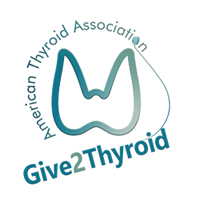SUMMARY OF THE STUDY
In the first paper, three Swedish national databases were combined and reviewed for patients < 18 years of age that had a total thyroidectomy over a 10 year period. The end point studied was the incidence of permanent hypoparathyroidism at 6 months after total thyroidectomy. Of 275 patients ages 10–17, the majority of total thyroidectomy operations were for Graves’ disease (78%) while 12% were for thyroid cancer and 10% were for other benign disease. Of these patients, 7.3% (20 patients) had permanent hypoparathyroidism, with the only significant predictor being operative time > 3 hours. There was no significant association between hypoparathyroidism and patient age, type of thyroid disease, performance of autotransplantation of parathyroid glands during surgery, lymph node surgery, weight of thyroid gland specimens, length of hospital stay, or hospital thyroidectomy volume.
In the second study, 350 adult patients > 18 years of age had a near-total, subtotal, or total thyroidectomy over an 8 year period by a single surgeon, mainly for benign disease (only 14% were for Graves’ disease). Almost 1/3 of patients developed temporary hypoparathyroidism, but only 4% had permanent hypoparathyroidism, all but one of which was not severe. An average of 2.28 parathyroid glands were identified by the surgeon at the time of thyroid surgery. No parathyroid glands were found in 20 patients, 1 in 16 patients, 2 in 126 patients, 3 in 114 patients, and 4 in 41 patients. Central node dissection for cancer and parathyroid autotransplantation increased the risk of temporary and permanent hypoparathyroidism.
WHAT ARE THE IMPLICATIONS OF THIS STUDY?
These papers show that mild temporary hypoparathyroidism after surgery is common in both children and adults. While permanent hypoparathyroidism is rare, it appears to be more common in children and teens than initially reported and is more common after longer, more extensive surgery. Even though it is recommended that the parathyroid glands be identified during surgery, not all parathyroid glands can be identified if the search for them is confined to those that are in the usual locations. Hypoparathyroidism is a chronic illness that greatly impairs quality of life and research should to done to prevent as well as improve treatment of the disease.
— Melanie Goldfarb, MD




